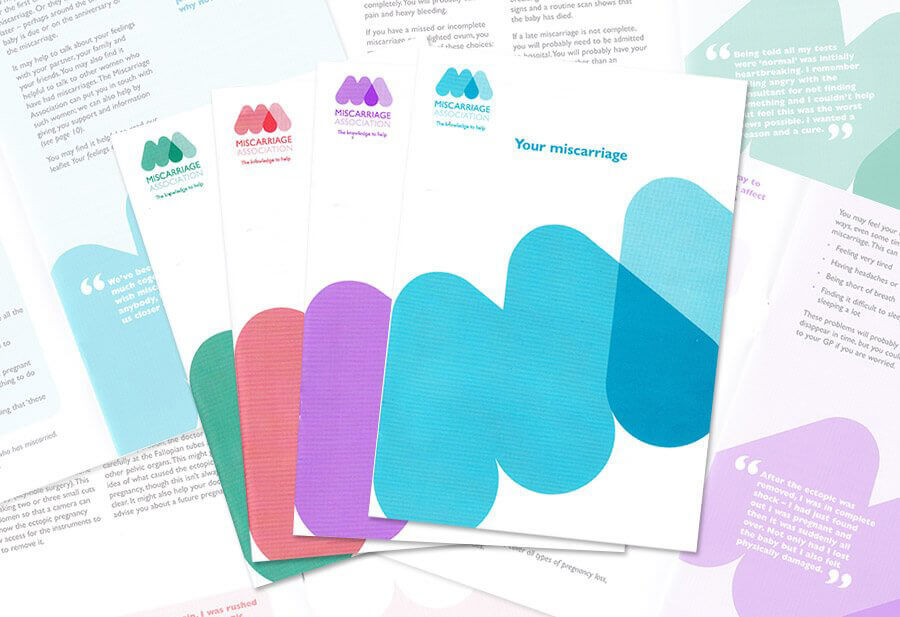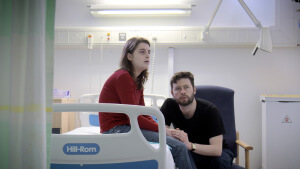

After completing this unit you will:
If the physical process of loss has not yet happened, women may find it difficult and distressing to have to make a decision about next steps. All management methods have upsetting or frightening aspects and all mean the final loss of their baby. It can feel impossible to choose between equally distressing options. And in some cases, there may be little or no choice.
Women can be quiet, shocked, very distressed, confused or overwhelmed. Those with a loss beyond 14 weeks’ gestation may be particularly shocked that they will need to go through labour and delivery rather than have surgery.
Your approach can make a positive difference to the woman’s experience.
I started to realise what the three options really meant. I would essentially have to bleed everything out of me, but this could take 2 or 3 weeks to happen; I could have some medication to make this happen faster; or I would have to have it surgically removed. None of these options appealed to me at all.
We return to Catherine and Emily and follow their stories further as they experience the management of their miscarriages.
It’s evident that Catherine and Emily want clear and honest information presented with kindness, sensitivity and acknowledgment of the emotional impact of pregnancy loss. However, it can be difficult for health professionals to have these conversations, particularly when women are distressed and there are pressures on clinical time.
This video features first trimester miscarriage. But the principles noted above apply equally to women with second trimester loss, ectopic pregnancy or molar pregnancy, alongside the issues specific to those losses.
We have already noted the importance of providing clear, honest and accurate information about management options in a sensitive and kindly manner. You should also explain why one or more option might not be possible or advisable.
It is important not to over-emphasise the risks or disadvantages of one option while minimising those of another. If asked for your advice, this should be on clinical grounds only; if asked what you would do, it is almost certainly better to help the woman choose the method that she feels she can cope with best.
If a woman is likely to miscarry at home, explain that she may have strong to severe pain and heavy bleeding which may contain large clots of blood; and that she might see something that is recognisable as her baby. If you do not provide pain medication, advise her about over the counter options such as co-codamol and also suggest that she buy sanitary pads suitable for a heavy flow.
You may feel as if you are scaring her by being honest about possible pain and bleeding. But as we heard from Catherine and Emily, being clear about what might happen will help women decide and prepare.
Explain what she needs to do and whom to contact in an emergency, e.g. if the bleeding is excessive (soaks more than one pad per hour), if she feels faint or unwell or is unable to cope with the pain. Ideally, provide this in written form as well. Distress can make it harder to digest or remember new information.
You may also need to provide information about what she might do with the remains of her baby. Your hospital should have this available in written form, but we also talk about this in Unit 4.
Women tell us they are often upset or frustrated by processes and timing. Although you may not be able to change this, you can help by empathising with their feelings and explaining more about processes and next steps.

If you can’t give clear answers, think about who might be able to, in the hospital or elsewhere. If appropriate, pass on details of the Miscarriage Association as a source of both support and information.
Many women present to A&E with early pregnancy problems, often because they feel it’s the quickest way to be seen and treated. In reality it is rarely the best place to go and they may have to wait a long time to be seen.
This short film follows a couple as they wait in A&E. Even if you do not work in A&E, you will find there are many general issues to consider here.
As you watch this film, reflect on how the A&E doctor could have made the couple’s experience less distressing.

I didn’t like being left to sit in the waiting room, covered in blood from the bottom down.
Many women find the experience of bleeding in a public place or a waiting room embarrassing and distressing. Consider the following ways to improve the woman’s experience:

At the time I just wanted to get out of there but now I wish I had asked for more information. I wasn’t told that I would keep bleeding.
Many women find the experience of bleeding in a public place or a waiting room embarrassing and distressing. Consider the following ways to improve the woman’s experience: